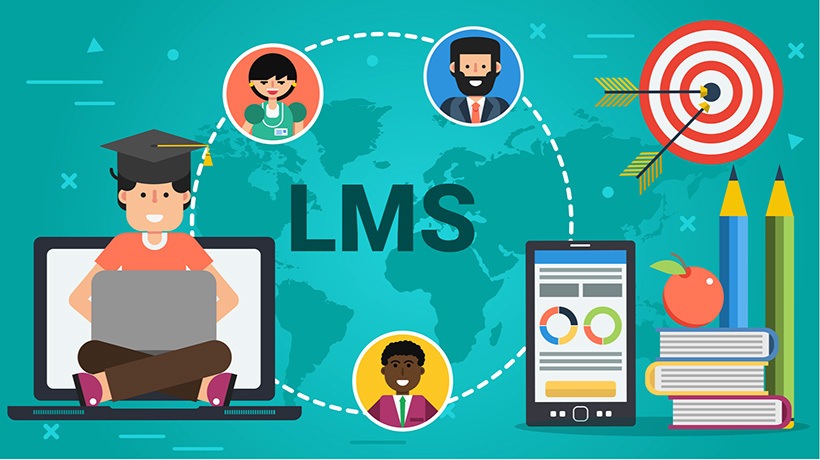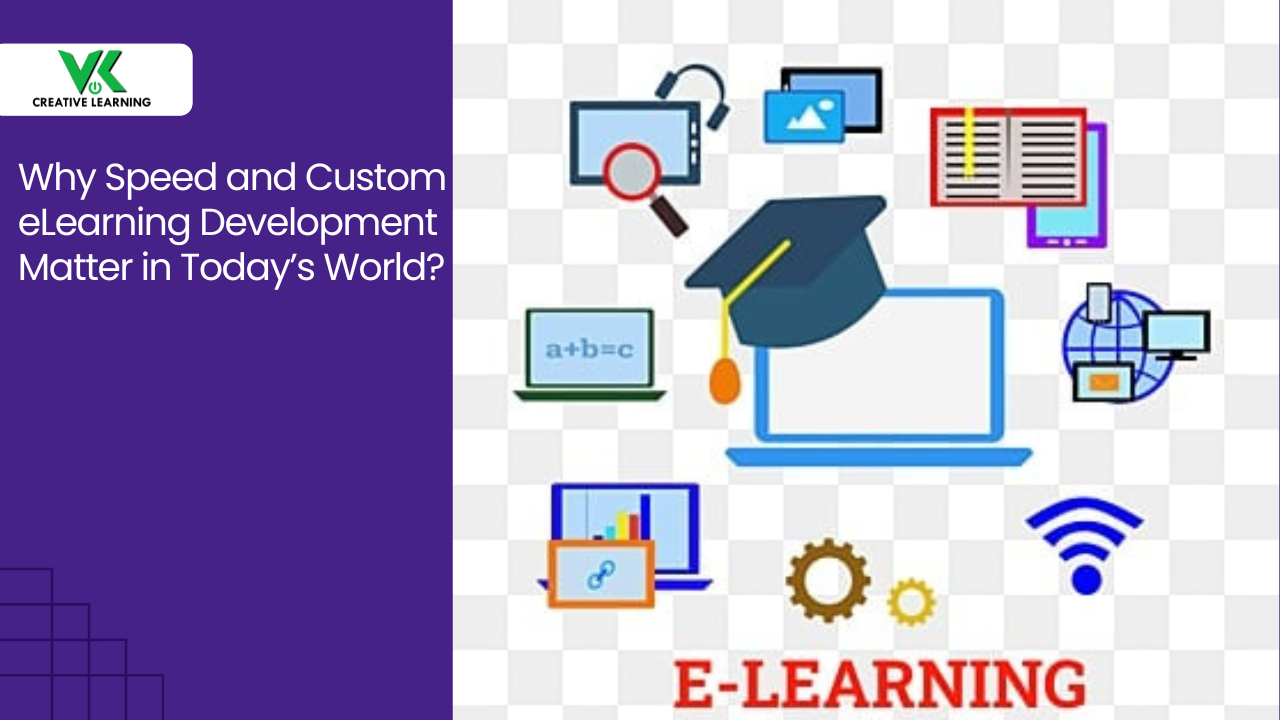LMS vs eLearning platforms? Why integrate them, and benefits?
December 09, 2023
Nowadays, two platforms have gained high importance in the current work and education environment -- Learning Management Systems and eLearning.
Reason: they come up with multiple advantages and user-friendly features that make training or teaching tasks easygoing.
Example: a corporate firm/school/university may opt for LMS within the campus so that content delivery can be managed easily, and employees or students can access them as when the need arises.
This way they don't have to carry a bundle of fat books with them (to institutes/workplaces), as content is readily available on their handheld devices or laptops.
Basic Idea: LMS And eLearning Platforms - What They Are
LMS: For firms to execute training sessions, it is essential that they are able to create their own courses, and have their own design layout along with the capability of delivering the course content -- this can be through a website or a mobile app. This is exactly the way an LMS (think of it as more like a software application) aids a company when it comes to training employees.
eLearning Platform: When it comes to the eLearning platform (more of a web-based application), even it performs a sort of the same task by allowing a corporate firm to create and host its own courses that can be shared with the learners.
By going through the above paragraphs, one may wonder: what are the differences between the two platforms? There are certain differences between both platforms (we shall come to them soon), and based on their needs, a firm can decide whether they need to use LMS or an eLearning platform.
But ideally, maximum benefit can be derived when a firm decides to incorporate LMS into an eLearning platform.
Understanding the Core Differences Between: LMS Vs eLearning Platforms
Both platforms are known to share many similar features, But there is a handful of key aspects that differentiate them and put them in their own league -- explained hereunder:
Usability And Convenience: When it comes to LMS, it offers a range of comprehensive functionalities such as allowing the instructor to share files with their students/professionals; storage of data so that they can be accessed whenever needed; allowing trainees/students to interact with their trainers as when required, and more.
Support for Multiple Formats: Corporate or academic eLearning platforms fare better when it comes to the creation of content in multiple formats -- engaging and interactive content.
An eLearning platform lets to add content; store it, or post the courses -- this can be in various formats like text, images, audio, and video -- something that makes absorbing of knowledge painless for the learners.
Scalability: eLearning platforms have an upper advantage in this case as they have been created keeping in mind the scalability aspect of the training needs or educational teaching requirements.
Availability: LMS has one of the major limitations: it can be hosted (that is, stored on a third-party server) or on-premises (within the organization’s servers) -- access is restricted to the organization’s network for internal communication.
However, this is not the case when it comes to eLearning platforms as they offer more flexibility (hosted generally) in terms of allowing to grow and manage increasing users (managing the aspect of controlling the accessibility). This aspect, thereby, enables learners to access the content from anywhere and anytime.
Course Creation: An LMS can provide the administrator or instructor the facility to upload content that has been developed before whereas corporate or academic eLearning platforms may offer built-in templates and drag-and-drop templates that can be used to create content right from scratch.
Learning Approach: There is a possibility that learners may have a structured learning curriculum and predefined learning paths along with deadlines when it comes to LMS.
Conversely, it is not so in the corporate eLearning platform as learners can choose courses that align with their interests (aka à la carte learning sort). This, therefore, turns out to be a self-paced type of learning wherein learners can go through the content that suits their learning style and pace.
Community: One of the best aspects of the corporate eLearning platform is that it allows the learners to exchange their ideas through online discussion forums; networking platforms, or even the Q&A boards. These features may not be necessarily available in the LMS which focuses on course management majorly.
Cost Factor: Be it an LMS or eLearning solution, the cost factor is totally dependent upon what kind of features have to be included in the platform and the type of scalability that is required.
Why Integrate LMS into eLearning Platform -- The Benefits
There are many benefits that firms/institutes can reap in innumerable ways by incorporating LMS into an e-learning platform -- explained hereunder:
Centralization: Any company would want all their content in one place so that it is accessible to all of the learners as required, or the employees don’t have to travel to the central office for training purposes.
Similarly, even students can access a chapter in case if they have missed a class through their handheld devices.
This also means that learners can not only access course materials but also assignments and tests in the form of quizzes that help institutes/companies to understand how well learners have understood the concepts.
This saves a lot of time and makes the learning process less confusing as the learners don’t have to juggle between multiple tools or platforms -- one platform for learning and another platform for testing their skills.
All these become possible when LMS is incorporated into an eLearning solution that centralizes the content distribution process -- and of course content distribution and management tasks too.
Collaboration:
With LMS integrated into an eLearning platform, it becomes possible for the learners to solidify their understanding as they get to discuss their problems with their fellow students or teachers through messaging or virtual classroom sessions.
Another instance of collaboration among students can be their participation in group projects or engagement in interactive activities that allow them to learn through project discussions or fun-filled engaging activities.
Progress Tracking:
Institutes or firms need to get an idea about how thoroughly their participants have understood the desired concepts -- this is called the progress tracking feature. This feature available in the LMS can be incorporated into the eLearning system which would help to keep a close eye on learners' progress. Beyond that, it would also help to create customized reports based on individual performance and areas they need to work on.
Customization: This is the most essential aspect as far as catering content that suits an individual’s grasping capability is concerned. This way, learners can be trained as per the firm’s set goals and upskilling can become easy.
This also takes care of the concern that existing material can be incorporated into the current eLearning platform in a hassle-free manner.
Security: This is one of those aspects that any firm would not like to compromise upon. Integration of LMS into an eLearning platform gives a high level of security with features like encryptions, regular backups, and access to the learners in a secure environment.
Conclusion
Incorporating LMS into an eLearning platform may help any institute or even a firm in many ways -- especially considering quick upskilling or a thorough learning process. If you desire to create an LMS-based eLearning platform with varied features that you as a company wish to have, then contacting VKCL will surely help.
VKCL has accumulated extensive experience when it comes to creating LMS-based eLearning systems -- as per the demands of companies operating in different fields.




